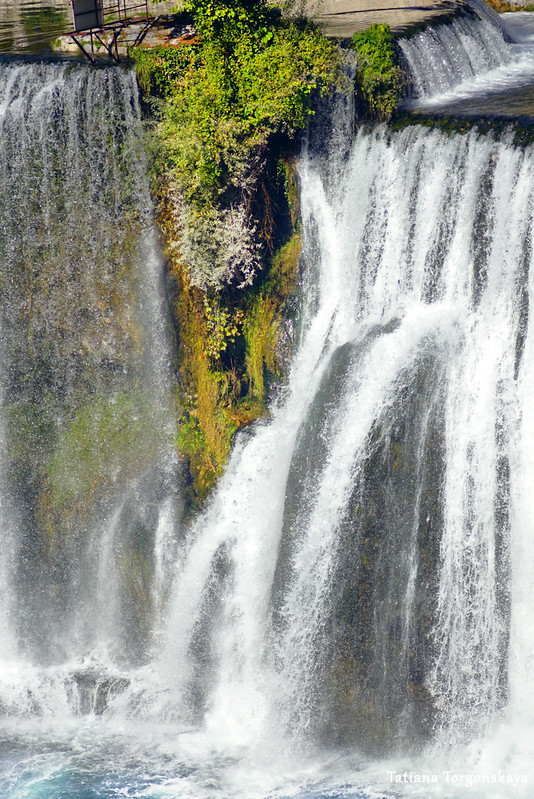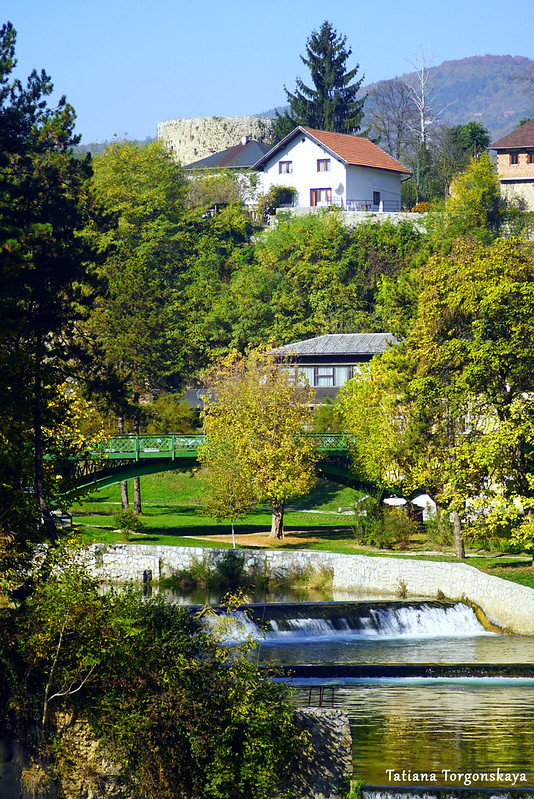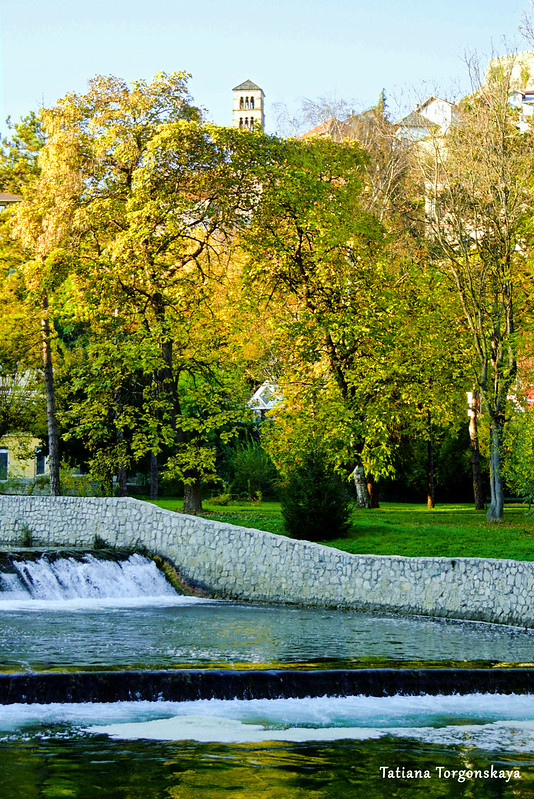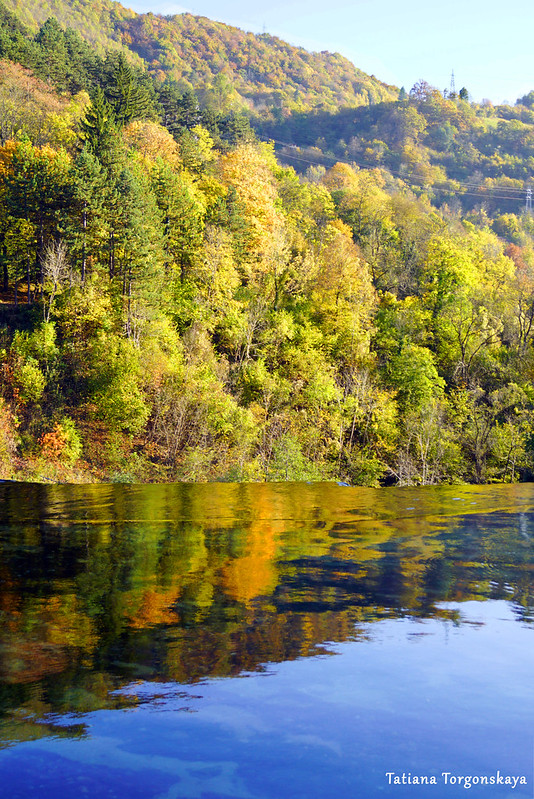The peak of Stožina is located on the territory of the Durmitor National Park above the Pošćenska dolina. This is far from the highest point of Durmitor, however, due to its picturesqueness, it has become one of the symbols of the national park and one of the most frequently photographed peaks. It is called the gateway to South Durmitor.
Pliva Waterfall (Bosnian: Plivski vodopad), also often referred to simply as the Jajce Waterfall (Bosnian: Vodopad u Jajcu), is a highlight of the city, thanks to which it cannot be forgotten or confused with another settlement.
However, this is a symbol not only of the city of Jajce, but also of the country, its pride and visiting card. This natural landmark is regularly included in the lists of the most beautiful waterfalls in the region and in Europe.
Needless to say, the glory is well deserved - the waterfall is really beautiful.

The Pliva waterfall connects two rivers: in fact, it is created by the Pliva, which flows from above, and the water falls into the Vrbas below.
The waterfall is 20 meters high.

Once upon a time, an average of 15 cubic meters of water per second fell from the cliff, but at critical moments the amount of water increased several times.
After the creation of a number of structures, the volume was reduced to about 3 cubic meters per second.

Although, of course, the amount of water can vary depending on the season and how often and abundantly rainfall occurs.
Nevertheless, this natural attraction pleases tourists all year round. Even on the hottest and driest days, the waterfall usually does not dry out. And since low temperatures are rare here, it does not freeze in winter.

Pliva waterfall appeared several tens of millennia before the city was founded. Experts believe that it was formed about 50,000 years ago

The bed of the entire Pliva River, like the waterfall itself, was formed in porous tuff. This is not a very strong material, it is prone to erosion.
Over the long years of the city's existence, several landslides were recorded, which changed the appearance of the waterfall. The last one happened in 2000.
Soon, the danger of collapse appeared again, but the work carried out on time allowed this to be avoided.

Locals proudly declare that Yayce is the only city in the world in which a waterfall is located right in the heart of the city. The waterfall is indeed located in the central part, near the Old Town.

Where can you admire the waterfall?
First of all, from the other side of the Vrbas. It is here that a magnificent overall picture emerges - a huge waterfall and a hill right above it, on the slopes of which old houses are located, and at the top - an ancient fortress. All this is complemented by the bright greenery of the trees.
The observation deck will be on the road from Banja Luka. At the entrance to the city you will see a map, there is also a small parking lot. Leave the car on it and go a little forward, through a small forest along the path. Very soon the path will lead you to the clearing with a breathtaking view.
If you do not have a car, you can also walk out of the city. The journey from the tourist information center will take about 15-20 minutes.

There is a paid area under the waterfall. This is the only equipped space below.
In fact, there is even a complex of playgrounds - a large semicircular one with a long bench, another slightly higher and closer to the water, plus a couple of intermediate options. Honestly, I would not say that the best pictures of the waterfall itself are obtained from here, but for a photo against its background it is definitely worth going here.

A ticket to this vantage point costs 8 BAM (about 4 €) from 01.05 to 30.09 and 4 BAM (that is, about 2 €) the rest of the time. This ticket also entitles you to free admission to the Ethnographic Museum and the Temple of the God Mithra.
Separate tickets to the museum and the Temple of Mithras cost 2 marks, regardless of the season.
So if you were going to visit all these attractions in the winter, then the waterfall generally gets a bonus. But in the season, even taking into account the visit to the museum and the temple, a ticket to the site, it turns out, costs 4 marks.
Tickets can be purchased at the city's tourist information center or at a special kiosk on the road to the observation deck.
Yes, children under 7 years old are admitted free of charge.

The path to the site is located near the bus station. To get on the trail, you need to go down the stairs from the street of the 2nd meeting of AVNOJ-a (Bosnian: ul. Drugog zasjedanja AVNOJ-a).

The road looks comfortable enough.
Closer to the end of the route, you can walk very close to the Vrbas river.

The path is fenced on one side, and benches are prudently set up in some places.

The waterfall from the paid site is really very close.

This, on the one hand, is a plus, since from such a distance and angle it is possible to assess all its power and strength.

On the other hand, the spray from the waterfall most often flies to the site, so if you are not ready to get completely wet, you will not be able to stand there for a long time.

And there are a couple more points from which you can also enjoy the views of the waterfall - a little less impressive, but still worthy of inclusion in your collection of memories. These options, like the first, are completely free.
So, the next location will be right on the way to the lower observation deck, if you go from the Old Town, on the already mentioned street of the 2nd meeting of AVNOJ. There is an excellent view from above.

And finally, there is a small platform that comes close to the waterfall, but from the opposite side. It is located directly under the rock that bounds the waterfall. It is very easy to get to it - go down from the tourist information point along the stairs to the park and walk along the river to the very end.





Comments
Post a Comment